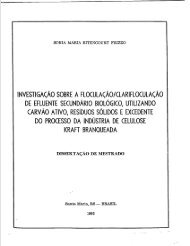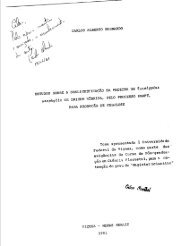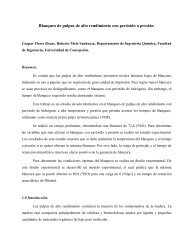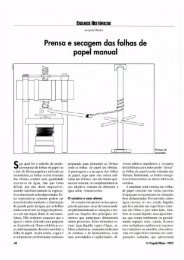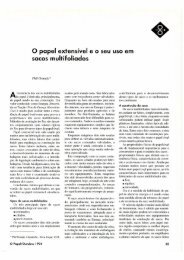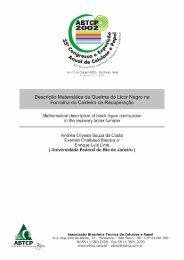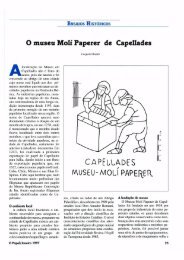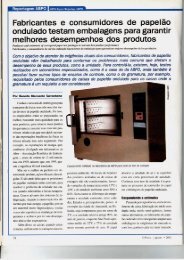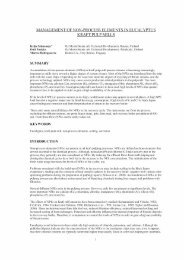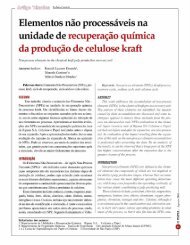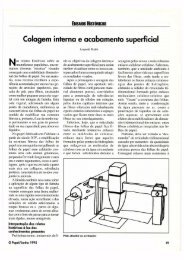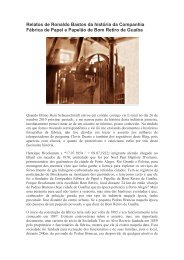O Eucalipto: um século no Brasil (The Eucalypt - Celso Foelkel
O Eucalipto: um século no Brasil (The Eucalypt - Celso Foelkel
O Eucalipto: um século no Brasil (The Eucalypt - Celso Foelkel
You also want an ePaper? Increase the reach of your titles
YUMPU automatically turns print PDFs into web optimized ePapers that Google loves.
Milhões de a<strong>no</strong>s perdidos<br />
Millions of years lost<br />
O mundo levou bilhões de a<strong>no</strong>s para retirar tanto carbo<strong>no</strong> da atmosfera, que ela tor<strong>no</strong>u-se<br />
respirável para o homem e outras formas de vida dos rei<strong>no</strong>s animal e vegetal.<br />
Há 345 milhões de a<strong>no</strong>s, <strong>no</strong>s pânta<strong>no</strong>s que recobriam a Terra, as imensas árvores começaram<br />
a crescer a partir do carbo<strong>no</strong> absorvido. Ao morrerem, seus troncos não se desfaziam,<br />
já que o mundo tinha pouco oxigênio disponível, e os velhos troncos se enterravam<br />
na lama, sofriam compactação e aos poucos foram se transformando em carvão mineral.<br />
Processo semelhante ocorreu <strong>no</strong> mar, onde a proliferação de minúsculos animais e vegetais<br />
igualmente provocou o seqüestro de carbo<strong>no</strong>, que não foi mais liberado. Essa massa,<br />
de plâncton e peque<strong>no</strong>s moluscos mortos, desceu ao fundo dos ocea<strong>no</strong>s e, recoberta por<br />
areia e sob imensa pressão, com o passar do tempo transmutou-se em petróleo.<br />
<strong>The</strong> world took billions of years to remove e<strong>no</strong>ugh carbon from the atmosphere that it<br />
became breathable by mankind and by other forms of life, animal and vegetable both.<br />
Some 345 million years ago, in the swamps that covered the Earth, huge trees started<br />
growing, feeding as it were on the carbon they absorbed. When they died, their trunks<br />
did <strong>no</strong>t decompose, since the world had little oxygen available, and the old trunks<br />
buried into the mud, were compacted and little by little became mineral coal.<br />
A similar process took place in the sea, where the proliferation of tiny animals and<br />
plants also sequestered carbon, which was <strong>no</strong> longer released. <strong>The</strong> reason is that this<br />
mass, of plankton and small dead mollusks, sunk to the bottom of the sea and, covered<br />
by sand and under huge pressure, in time became petrole<strong>um</strong>.<br />
O E U C A L I P T O - U M S É C U L O N O B R A S I L<br />
122




